blog
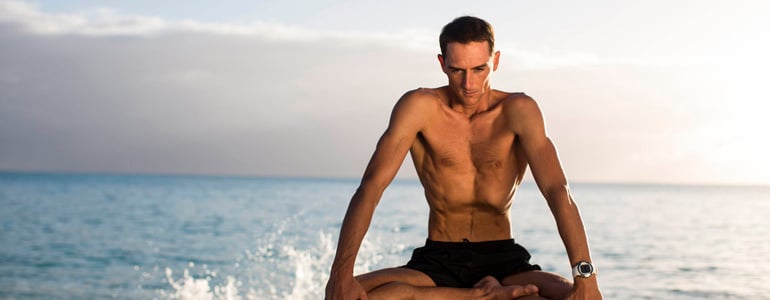
Infographic: What happens when you go deep?
What happens to the body when you go deep? This infographic explains some of the physiological changes that the body goes through on a dive. But one thing it can't explain – and that's the feeling.
Says Will Trubridge: “I love freediving because it's an opportunity to escape from gravity, sound, light (if you go deep) and even the sensation of time passing. A deep freedive can be like a dream, in that all the rules of reality seem changed.”
Dive in below to discover more about the sport, the physiology and the different disciplines...
infographic created by: zooom.at/Adi Sumic
The Dive Reflex
It is often said that humans are perfectly adapted for diving underwater thanks to the 'mammalian or dive reflex' – something we share with other aquatic mammals such as whales and dolphins. The main feature of this is the way the heart rate automatically slows once the face is submerged in water to reduce oxygen consumption. The dive reflex kicks in again after approximately 25 m: the heart rate slows by as much as 50% and vasoconstriction takes place. This is where warm blood retreats from the body's extremities to protect core organs.
At this depth most divers can stop swimming. “Here I have lost enough buoyancy from lung shrinkage under pressure that I can stop swimming and freefall for the rest of the descent,” says Will.
Freediving Disciplines:
There are three main depth disciplines in competition freediving: Constant Weight No Fins (CNF): The freediver descends and ascends without any assistance (only using arms and legs without fins).Constant Weight with Fins (CWT): The freediver descends and ascends using fins/monofin and the use of arms.Free Immersion (FIM): The freediver dives without the use of fins/monofin, but pulls a rope during descent and ascent.Says Trubridge: “CNF and CWT are the two most popular disciplines. CWT gives the deepest performances, while CNF is seen as the purest expression of human aquatic potential. FIM is more of a relaxed discipline, but there are definitely some very serious practitioners there as well!”
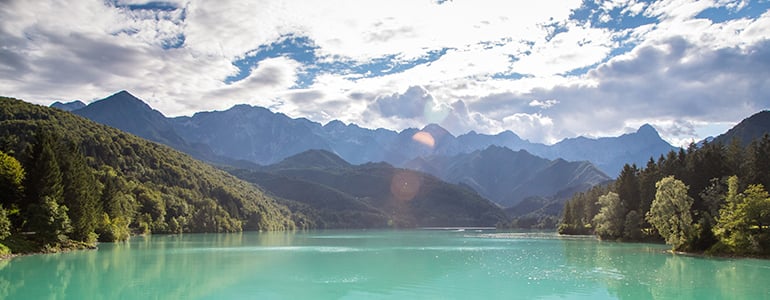
Mother nature left us hungry for more...
Trent Busenbark is a seasoned outdoorsman based in the US. He's also the proud winner of our #AdventureSelfie contest, winning an Ambit3 Sport. How does it feel to win? It’s always nice to see some appreciation for an image you personally captured, especially in today’s world where almost everyone has access to a camera. I am grateful for the consideration. Tell us about the photo.This photo was captured last September in Montana on a backcountry archery hunt. The original intentions were to bivy out for multiple days. On day one we packed in 15 miles (24 km) and the next day we were greeted with plummeting temps, severe wind, and driving snow. This photo was captured with a GoPro on our evacuation out of the mountains. Mother Nature and the rough terrain definitely got the best of us that trip but left us hungry for more. Plans are in place to return.
Trent's winning selfie.What gets your adventure blood pumping? For the most part my hobbies include virtually anything outdoors from horseback riding to skiing. There seems to have always been a heavy focus on hunting and photography. I'm a passionate outdoorsmen with a common goal – get out there as much as possible and always try to capture the moment. Tell us about a recent adventureI recently returned from Italy and enjoyed spending a couple days in the Dolomite Mountains. The views were fantastic! Another Montana trip is planned for November and is sure to present its own challenges.
Features you'd most like to use from the Ambit3?I am excited to use the GPS feature on the Ambit3. In Montana my Sunnto Core with its compass and altimeter proved vital in reading our topo map. It will be nice to leave specific waypoints along the way with the GPS feature. What's next? Towards the end of September I will be heading to Canada for a waterfowl outing and I will be returning to Montana for a late season elk hunt in November. If I am lucky I would like to squeeze in a ski trip this winter as well.
All images ©Trent Busenbark. Follow him on Instagram.
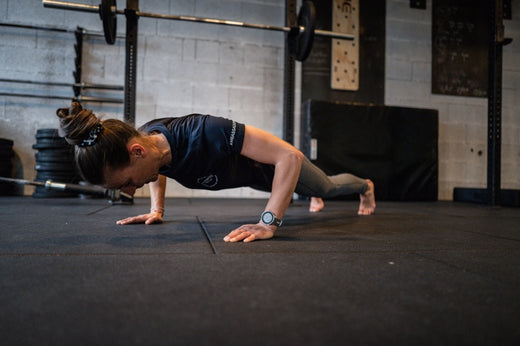
12 high-intensity strength training exercises for endurance athletes
Follow our training video and SuuntoPlus Guide to get stronger.
In our previous article on why endurance athletes should do high-intensity strength training, sports scientist, coach and ski mountaineer Susi Kraft lay out five reasons why it is essential. In this article, Susi explains and demonstrates how to perform 12 strength building exercises. Press play on the video below and scroll down for her instructions on how to perform each exercise correctly and safely.
Follow this strength training session on your Suunto!
With the help of SuuntoPlus Guides, you can also follow this strength training workout on your Suunto watch. Before starting a 'weight training' workout on your watch, go down to exercise options and select ’12 Strength Exercises’ from the SuuntoPlus Guides menu. Start the workout and you will see step-by-step guidance on one of your watch screens. Swipe left until you see it. Press lap (lower right button) to advance from one step to the next one. Watch the video, activate the strength training guide for your workout and get to work. Time to get stronger!
Learn more about SuuntoPlus Guides here.
If you are new to strength training, keep in mind it’s better to begin using your own body weight to begin with and to find a trainer who can personally show you how to do the movements with proper form.
By Susi Kraft
Lifting heavy weights not only improves your performance as an endurance athlete, but done regularly, it also helps to avoid acute and overuse injuries caused by repeated loads while downhill running or skiing, for example.
Learn to perform the 12 exercises below with the proper technique and you’ll boost your vertical power and endurance!
Before you start
Make sure you develop a baseline of strength before you start lifting heavy loads. This can be achieved via exercises performed with your body weight only. Developing core strength is an essential preliminary to moving on to heavy weights. Without it, you risk injury. Once you have a decent level of base strength, perform the exercises below with a focus on technique and a lighter weight. Only increase the weight when you have good control.
What is heavy resistance training
Heavy resistance training aims to optimize your maximum strength and explosive strength. It’s one of the most effective forms of strength training. Performed regularly it will let you gain strength much faster than body weight exercises.
How and when to train
Endurance athletes normally have plenty of time for strength training during the off-season or during the base training phase. For example, as a trail runner you can use winter to prepare or as a skimo athlete you can make summer and early autumn your time to build strength.
I recommend dedicating about two months for intense and specific high resistance training. Try to complete two sessions per week.
All big muscles should be targeted
Focus on complex, full-body exercises
Train with high loads and few repetitions
Eight to 12 repetitions
Three sets
Two minutes pause between sets
At least two days off between strengths training sessions (endurance sessions possible)
How much weight to choose
High resistance training is performed at about 80 % of your one-repetition maximum (1RM). If you don’t want to test out your 1RM for each exercise (as that is really intense and requires a perfect technique already) you can just use a weight that allows you to perform a maximum of 8 to 12 repetitions.
Which exercises to choose
Upper-body and lower-body exercises.
Choose multi-joint exercises (such as a squat), exercises capable of heavy loads (such as a deadlift), and exercises that focus on power development (such as a box jump).
Also choose unilateral (one leg exercises such as split squats or step-ups) and bilateral exercises such as deadlifts.
Now let us introduce you to the most important strength exercises for endurance and mountain athletes. You don’t have to perform them all every time, but make sure to choose exercises in an order just described.
12 strength exercises for endurance athletes
WARM UP
15 minutes of cycling, rowing or treadmill running
Dynamic sretching (especially ankle, hips, spine, shoulders)
5 x 30 seconds skip rope
If you like you can also perform some easy core exercises or a brief cross fit workout – just make sure not to push too hard.
Strength training exercises
Box jumps
Abduction
Bulgarian split squats
Pull ups
Squats
Push ups
Step ups
Deadlifts
Heel raises
Romanian deadlifts
Barbell row
Single leg hip thrusts
Box jumps
Box jumps are great for developing power through the lower-limb extensor muscles.Stand tall with a box (40 to 60 cm high) in front of you with feet hip-width apart and arms by your sides. Now bend the knees and immediately move back up.
Jump onto the box as explosively as possible. Try to land gently on both feet and extend your hips and knees on top. Step down and repeat three sets of five to eight repetitions. Try to make each jump good quality in terms of technique and form. Remember to always perform jumps at the beginning of your workout, as they are most demanding.
Abduction
Use a stretch loop or elastic band. Wrap it around your thighs or lower legs (which is more demanding). Shift your weight to one leg and try to stand stable while extending the other leg out to the side. Do two sets of 12 repetitions for each leg.
Bulgarian split squats
Stand in lunge position. Heighten one leg on a box. Lower your body by bending the front leg to about 90° knee angle and slowly get up again. Use a kettle bell, two dumbbells or a barbell to add weight. Make sure your front knee does not shift out to either side while going down and up.
Pull ups
With hands shoulder width apart, begin by hanging from a bar with arms fully extended. Pull yourself toward the bar with your chin clearing the bar. Lower yourself slowly and repeat. If you can’t perform a single clear pull up you can use resistance bands to support yourself.
Squats
Put a barbell on your neck/shoulders/upper back. Squat down as far as possible (maintaining a stable spine). Push back up. Always keep the barbell over your middle foot and the pressure distributed over your whole sole. Focus on your knees (mirror). They should never shift to medial.
Push ups
Start with hands shoulder width apart underneath your shoulders. Lower your chest to the ground and push back up. Keep your body stable and make sure not to bend your lower spine. If you can’t perform a single push up on the ground use a box or table to base your hands on.
Step ups
Step on a box that's about the same height as your knees. Stand up straight and step back down. Repeat eight to 12 times for each leg. Use two dumbbells or a barbell to add weight. Make sure to keep the pelvis level throughout and focus on your glutes and quads as you step up.
Deadlifts
This exercise strengthens the quadriceps, hamstrings and glutes and also addresses your upper body stability.
Stand behind a barbell on the floor with your feet hip-width apart and the bar over the centre of your feet. Bend the hips and knees to grip the bar.
Keep your chest up, hips back, stand stable on both feet. Make sure your lower back remains neutral by activating your abdominal muscles.
Pull the bar up close to your shins and extend your knees and hips simultaneously and explosively. Push through your heels, lift the barbell straight up and drive your hips forward as you lift. Always keep your arms straight; weight is lifted by getting up out of your legs only.
Hold the upper position for two seconds.
Return the bar straight down to the floor by flexing your hips and knees slowly.
If you are new to this exercise, perform three sets of 10 to 12 reps with a light weight. To progress, increase the weight and reduce to three sets of six to eight reps. In case you are uncertain, perform the exercise under the guidance of a sports therapist or strength coach.
Heel raises
Stand on a box or a stair with your feet hip width apart. Raise your heels up while keeping your knees straight. Slowly lower your heels underneath the edge of the box. Rhythm: one second up, three seconds down. Use two dumbbells to add weight.
Romanian deadlifts
The Romanian deadlift is a variation of the traditional deadlift.
Grip the bar shoulder width, pinch your shoulder blades together and keep your chest up. Lower the bar down to your shins by moving your hips backwards and leaning your upper body forwards while keeping the bar as close to your body as possible. Bring your hamstrings to full stretch. Return into starting position by pushing the hips forwards. Always keep your lower back fixed!
Barbell row
Grip the bar shoulder width, bend your upper body forward (up to horizontal to the floor). Slightly bend your legs and hips. Hold your spine ina neutral positon and activate your core muscles. Pull the barbell up to your belly button and squeeze your shoulder blades together. Slowly extend your arms again. Repeat. Focus on your upper body and legs to remain stable.
Single leg hip thrust
Lie down with your shoulders on a box or bench. Raise one leg up straight in the air and keep the other foot on the ground (ankle underneath the knee). Lift your pelvis from the ground until your shoulders, pelvis and knees form a straight line. Lower the pelvis down to the floor again.
All images: By Philipp Reiter at Sportssupport in Salzburg.
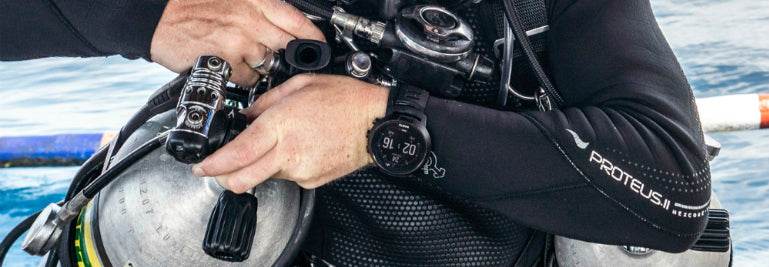
Introducing Alex Kydd
Suunto Dive are super excited to announce Alex Kydd is joining the Suunto Ambassador family. Photographer, marine biologist and diver originally from Melbourne, Australia, Alex now proclaims to being “based on” Ningaloo Reef Western Australia honoring the number of hours that he spends exploring underwater capturing his breath-taking images.
A rare shot of Alex Kydd in front of the camera taken photographer Alfred Minnaarr. ©
Alex trains like an athlete in his discipline. Practising every day, editing all the time and descending beneath the surface has led him to achieve artistry in his images. Alex's photos stand out above the rest with his dedication and passion aiding his continued development as a photographer enabling him to produce his unique shots.
“The ocean is my happy place. Every time you enter the water you never know what you might see and it's such a misunderstood ecosystem. Everything is connected and the more time you spend in it, the more you appreciate.”
Alex Kydd by photographer Alfred Minnaarr ©
Beginning his diving journey with snorkelling at 16 in the cool waters off Melbourne where he grew up, he later began scuba diving on a trip to Thailand in 2009 where he firmly solidified his love and respect for the ocean. Exploring his passion further Alex studied Marine Biology at university and four years ago he started his journey into the world of underwater photography and has had not had a chance to look back.
“At age 16 I first started taking photos. I had a very basic 2m waterproof camera for snorkelling in Melbourne. I progressed slowly to more upgraded cameras over the next few years. Eventually I had enough savings and I got myself a DSLR and housing. I was going out taking 500-1000 photos per day and editing them every night. This I believe, fast tracked me to learn. The best advice I can give for underwater photography is to find a mentor or like-minded people to learn from.”
Alex’s next stops on his extensive adventuring are Raja Ampat, West Papua, French Polynesia and Fiji where he will be exploring with his new dive computers including the Suunto EON Core, Suunto D5 and Suunto Tank POD. Alex’s favourite device at the moment is the Suunto D5. He also represents Fourth Element and Ocean Positive as a team diver.
Alex Kydd:
Instagram

PREPARE FOR SNOW
When the snow falls, you want to be ready. And fit! Nothing will kill the fun quicker than an early season injury, so we asked pro skier Greg Hill for his best advice. “It’s definitely time to start getting ready,” he says. Below, he outlines the exercises you need to be doing to be in good shape for the snow.
STOP TALKING
Obviously keeping up on our cardio is very important, biking, running, treadmill whatever we have time for. But it’s important to do at least three sessions of 20 minutes each week. This is to just keep our cardio at par, but to improve it we need to push ourselves a little harder. That means three longer runs or bike rides of an hour but then 10% of that should be in the pushing hard phase – pushing so hard you can't speak! Put another way: 90% of our exercise should be in the ‘able to talk’ phase and then 10% in the ‘unable to talk’ phase.
GET DOWN!
Run or walk downhill. Hiking down from alpine hikes, or running downhill is a great way to shock your muscles and get them ready for the endless downhill descents. This imitates the impact of hard turns and the repetition of the sport.
HOLD THE WALL
Too busy? Go for a ‘wall sit’ and start extending the times you can sit against a wall. Get your legs at 90º, with your back against the wall and hold it there. This replicates the constant quad stress and strength you will need to crush the big runs. It’s an isometric strength training. Nothing moves or flexes – it just holds. Try two minutes and build up. (NOTE: Greg has quads of steel. We tried this and failed so don’t feel bad starting at 1 minute and pushing from there.)
JUMP!
It’s the classic ski training exercise but that’s because it works on developing power. There are many different games to play but the main thing is exploding up as high as possible and then landing and absorbing the shock smoothly. Reps of 20 and three or four sets to start off.
WEIGHTS
All around strength is also a big factor – core strength being key to balance and good skiing. So if you can, an all around weight routine will help immensely.
STAY UP LATE WATCHING YOUTUBE
Lastly, get excited for the ski season! Watch ski videos, dream up adventures, fuel your desire as much as possible. It’s the mind that will drive your body so get it excited!
Images by Bruno Long Photography

A visual guide to freediving
There are some adventure sports that have only been around for a matter of years, sports like ice-climbing, kiteboarding. Then there are others that have existed for only hundreds of years, like skiing and running. But there's one sport that has been around since the dawn of time itself – freediving.
Humans have been holding their breath and diving in water for thousands of years – to fish, and more recently, to have fun and compete. In fact, humans are so uniquely adapted to going underwater it's possible to argue that we've freediving before we even became human.
What happens during a dive? Check the infographic below:
Graphic: ©zooom.at/Adi Sumic
What are those special attributes that we share with other aquatic beings that make freediving possible? It all comes down to the so-called 'dive reflex'. The main feature of this is the slowing of the heart which automatically occurs once the face is submerged in water. This has the effect of reducing oxygen consumption so you can hold your breath for longer.
The dive reflex kicks in again after approximately 25 m: the heart rate slows by as much as 50% and vasoconstriction takes place. This is where warm blood retreats from the body's extremities to protect core organs. Again, this has the effect of lengthening the time we can spend underwater.
Will Trubridge competing at the 2014 Suunto Vertical Blue ©Daan Verhoeven
At this depth most divers can stop swimming – and just freefall to the depths below. It is this part of the dive that can induce the most pleasant feelings. Many freedivers feel euphoric as they enter an almost trance-like state.
Descent can be as fast as a meter a second so a world class freediver can expect to reach a depth of 100 m after approximately 1m 30s. At this depth lung volume will have shrunk from approximately 6 lt to 500 ml. The ascent is then the most psychologically challenging part of the dive as divers fight the urge to breathe. Stomach contractions kick in. Hallucinations are not uncommon. The most dangerous part of the dive is then the last 10 m to the surface – this is where the pressure difference is at its greatest and O2 supplies at their lowest – and divers are at risk of blacking out.
But it's not just about the depth. Competition diving and its many disciplines are only one aspect of the sport. For most freedivers, the sport is just about hanging out with friends and exploring the underwater world.
Main image ©zooom.at/Agustin Munoz
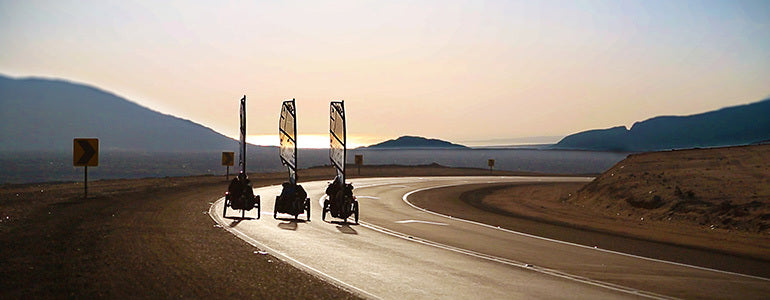
The adventure mindset
You don’t have to be an extreme rock climber or cliff diver to experience the adventure mindset – and reap its rewards. You just have to say yes more, finds Tarquin Cooper.
© www.davecornthwaite.comDave Cornthwaite was once a graphic designer in Swansea, Wales, a bad one, he freely admits. Then in 2005 he decided to try something radically different – and so he boarded a flight to Australia with a skateboard in his luggage and a crazy idea in his mind. Several pairs of shoes, approximately 2,911,500 pushes, and 5,822 km later, he successfully made it across the continent. It was the start of new beginning. “To many, this was a bizarre notion even to consider, let alone practice, but personally I had never been faced with a larger opportunity. It wasn't crazy, it couldn't have felt more sane. For the first time in my life, I felt I had purpose.” Cornthwaite has never looked back. He’s currently 11 journeys into Expedition 1,000, a mission to undertake 25 journeys of 1,000 miles (1,600 km). These have included swimming the Missouri, descending the Mississippi by SUP and crossing the Atacama desert by ‘whike’, a sail and pedal-powered recumbent tricycle.
Over 500 people came out on 20 different camps, some had never camped before.
He says he doesn’t see himself as ‘an adventurer’ or particularly brave. “I just made a decision to being open to more things. My curiosity has just grown and grown,” he says. Unsurprisingly, Cornthwaite is a massive advocate for adventure as a means of ‘facing Mondays with a smile’ as he puts it, helping to organise social projects, events, workshops and encourage others to find their adventurous spirit.
© www.davecornthwaite.com
This summer for example he decided to get to know his Facebook friends in person, inviting them to go camping with him over various weekends. The result was amazing, he says. “Over 500 people came out on 20 different camps, some had never camped before.” Such was the success, they formed their own tribe, the Yes Tribe and organized their first ‘Yestival’ in October. The idea is to encourage people to share ideas, whether adventurers or entrepreneurs and then learn how to take the steps to make things happen.” He says we have so much to gain from embracing our adventurous spirit and taking that leap into the unknown, and not just for the obvious benefits being in the outdoors brings. “As I meet more and more people I feel that curiosity. It needs to be brewed,” he says. “The human race is designed to evolve: curiosity and adventure – they’re both part of moving forward.” It’s the embodiment of the 7R gene spirit.
© www.davecornthwaite.comSomeone else who lives by the adventure maxim is executive coach Matt Walker who believes the adventure mindset is not just a tool for adventure sports but as a way of facing life, and all that entails. “My life revolves around adventure,” he says. “It is my livelihood: Adventure in the classic sense of scaling high mountains in remote regions of the world and adventure in the mindful sense of living each day, each project, and in each relationship with intention, focus, and humor.”
Adventure is the willingness to commit to an uncertain outcome with an open heart.
He says it’s hard to live out the philosophy of adventure in our day-to-day lives. “It is the hardest thing I have ever attempted,” he says. “Bringing adventure into the core being of my life has been fraught with challenge and learning. The reward though is a level of engagement and awareness that is deeply satisfying and joyous.” And what is the elusive essence of adventure? “At the core, adventure is the willingness to commit to an uncertain outcome with an open heart and a willingness to learn and engage,” he says. “It is the ability to take a leap into the unknown with mindfulness and grace. Framed this way, opportunity for adventure presents itself to us everyday.”
© www.davecornthwaite.com
He says there are five key components of adventure: ‘high endeavor', the ability to think big; ‘total commitment’, the willingness to embrace challenge; ‘an uncertain outcome’, a necessity to keep us engaged and aware; ‘tolerance for adversity’, the ability to remain resilient; ‘great companionship’ to make the journey not just possible but also worthwhile. He adds: “Adventure is not reserved for the extreme athlete or the daredevil. It is an attitude and lifestyle choice. It is an expression of your heart's intention and passion for life.”
Adventure is not reserved for the extreme athlete or the daredevil.
It’s a view echoed by by psychologist, leadership coach and adventurer Sarah Fenwick who also says adventure doesn’t have to be climbing Mt Everest. “It all depends on the personality,” she says. “Some people are happy to ski to the North Pole who’ve never skied before, while others might want to at least complete a ski journey in Norway for example before going.” It’s all about getting out of your comfort zone, but by the right margin, she says. “I like to think of fear and excitement as different ends of the same continuum. When you do a challenge which you perceive as just outside your comfort zone, where your skill set is just below or 90% of what’s required, that’s when you get that little bit of excitement. Then, when you do achieve it, you get that great feel good factor. I think everyone should experience that fear-excitement zone!”
© www.davecornthwaite.comFenwick has plenty of personal experience herself of that fear-excitement zone; in a sail boat on many expeditions around the world, including to Antarctica; in the air as a record-breaking paraglider pilot which included becoming the first person to launch from the true summit of Ben Nevis, the highest mountain in the British Isles. The secret to embracing your inner adventurous spirit, she says, ‘is making sure that when you stretch, it doesn’t become a negative experience’. “For some people it might only be 5% or 2% out of their comfort zone. But it’s a positive thing. There are so many stories of how people have grown and gone on to do bigger and better things. The more people who do that the more we’ll have an aspirational and achieving society.”
Some people just wanted to go hiking while others talk about climbing Everest and cycling across continents.
Cornthwaite is used to listening to his audience’s own goals after the motivational talks he gives. “I was at an event last night,” he says. “Some people just wanted to go hiking while others talk about climbing Everest and cycling across continents.”
© www.davecornthwaite.comHis advice for taking that first step? “Find a group or an event that echoes your passion or go along to a talk. Surround yourself with people who share that passion. Then naturally, having that support and encouragement helps you make the next step.” And one more thing he says: “Just say yes more!” Walker has a word of caution however: “Adventure is work – but the pay-off is well worth the commitment. Your summits await.”
Lead image: © www.davecornthwaite.com
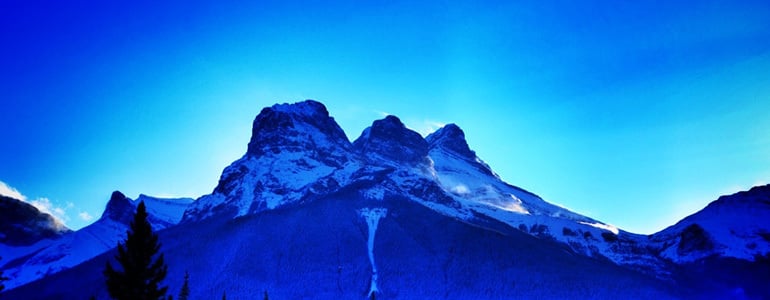
Winter is coming: is your body prepared?
Matthias Scherer and Tanja Schmitt are two of the most active ice climbers in the world. How are they preparing their bodies for the upcoming season? By dry-tooling and cranking out sets of pull-ups and other drills in the gym, that's how. Below, they share some of their training secrets.
Dry-tooling “Drytooling means climbing with ice tools and crampons on rock,” says Matthias. “It's a very good physical preparation for ice climbing but should not be confused with ice climbing. Ice climbing is (like alpinism) all about the experience. You have to be willing to learn new things continuously and constantlyadapt to the challenge the ice or the mountain presents. Matthias Scherer drytooling in Canmore, Canada. ©Tanja Schmitt
Many of the drytooling crags feature drilled holds. Drilled holds gives you the advantage that your tools will "stick" safely in the rock, so you can do athletic moves without the chance of popping your tool off – but you will not learn the skills how to scratch and place tools precisely on natural features. Those skills are primal when it comes to real mixed climbing. So new school drytooling on drilled holds is a great way to get physically fit, but it will not replace, or give any experience for ice or mixed climbing.”
Tanja Schmitt drytooling in Canmore, Canada. ©Matthias Scherer
“Our goal was to build core and arm strength Since we were able to climb a very athletic M9 10 times in one hour means that we achieved our goal!
Indoors – at the gymWhile the best form of training is the real thing, gym sessions are also important parts of any fitness regime. These are some of the drills that Matthias and Tanja perform. “Our training in the weight room has the unique goal to compensate the hard impact that drytoolinghas on the body. So we train the opposite muscles after each Drytool workout next day in the gym. The training does not take a long time, in fact it can be done in 40-60 minutes. 20 minutes of a warm-up is however essential! Basically we do three circuits consisting of 6 different exercises. Each exercise or “set” consists of 10-15 repetitions and two minutes rest beween exercises.”
Matthias front lifting weights. ©Tanja SchmittOne circuit consists of:
Lateral Raises with adjustable dumbbells
Front lifting with adjustable dumbbells
Reverse butterly
Chin pulls with a barbell
Push ups
Hanging leg raise (straight and bent arm)
Tanja performing lateral raises. ©Matthias Scherer
A quick daily training routine during the whole year when the pair can not go climbing is:
3 x 30 pull ups - two sets on tools, one on hands3 x 30 push ups3 x 15 hanging leg raises3-5min rests between exercises. “In fact, we go on the slackline in between the sets, it's less boring.”
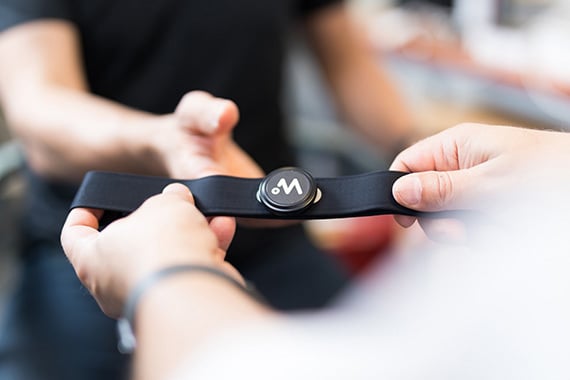
Movesense grows independent from Suunto
Vantaa, September 30, 2021. Movesense, the open development platform for wearables and sensor products for fitness and health, is becoming independent of Suunto following a management buy-out deal. The deal opens new opportunities for Movesense to strengthen its business and seek growth especially in the medical field. At the same time the operational and other collaborative links with Suunto will remain deep.
Through the Movesense platform, Suunto has made its own expertise available to other companies, enabling its technology to be used in applications that are not part of Suunto’s core business. Suunto is sharpening its focus on outdoor sports watches, dive computers, and mechanical instruments for outdoor enthusiasts. At the same time, Movesense targets its sensor platform to diverse business-to-business clientele for developing their own wearable solutions in sports and wellness and, most recently, in the medtech market with its recently introduced Movesense Medical sensor.
The buyer of Movesense is a company owned by current General Manager of Movesense, Mr. Jussi Kaasinen, who together with the Movesense team will continue to build the business further and serve existing and new customers. The parties have agreed not to disclose the transaction price. The deal effective of Oct 1st, 2021, will transfer Movesense’s team and business to the new company led by Jussi Kaasinen. He is a seasoned startup entrepreneur as he was the former CEO of Sports Tracker acquired by Suunto/Amer Sports in 2015.
Suunto supports the transition to the full extent. The contracts with existing business-to-business customers and technology partners are transferred to the new company. Movesense and Suunto will continue deep co-operation in operational processes such as supply chain, manufacturing, and logistics.
“This truly exciting change opens us new opportunities to operate and expand in the medical space with the Movesense Medical sensor, while at the same time allowing continuing driving the growth with our current and future Movesense sports products. We continue to provide our customers unprecedented Finnish-made cutting edge sensor technology, which enables new use cases varying from measuring physiological signals from individual athletes to team sports and all the way to health metrics and clinical grade ECG monitoring.”, comments Jussi Kaasinen.
“Movesense becoming independent is a natural step following incubation and years of growing its business under Suunto umbrella. Suunto’s focus is on Outdoor and Adventure. As an independent company Movesense can focus on a more diverse range of opportunities. I’m proud of what the Movesense team has achieved to date and wish the team best of luck in growing the business further.”, says Heikki Norta, CEO and Brand President of Suunto.
Movesense sensor is a coin-sized programmable movement, ECG and heart rate sensor for fast and cost-effective creation of wearable sensor solutions. Movesense is used for applications in health, wellbeing, sports, research, and more.
For more information, please contact:
www.movesense.com
info@movesense.com
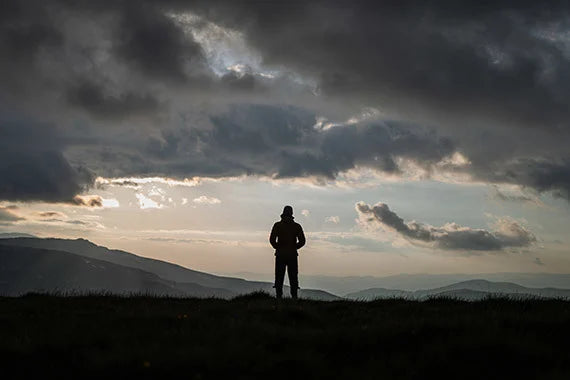
Phishing Attempt Targeting Suunto Brand
It has come to our attention that the Suunto brand has been exploited in a suspected phishing attempt. In late-November and early-December several marketing agencies across Europe and North America have been contacted by someone falsely claiming to represent Suunto. This individual uses the name “Matti Rantanen” and email domains include @eu-suunto.com, @us-suunto.com, @asia-suunto.com and @tech-suunto.com.
We sincerely apologize for any inconvenience this may have caused and appreciate your understanding. At Suunto, trust and reliability are core to our values, and we strongly condemn this malicious behavior.
Our IT and legal teams are actively addressing the issue to prevent further incidents.
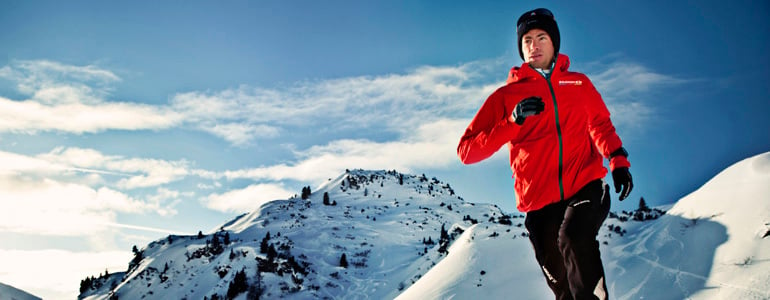
7 winter trail running tips
Dark mornings, icy roads, gusting winds and sub-zero temperatures ... running during the cold winter months can be a real challenge, sapping our motivation to get outdoors. But winter also can be an advantage, since it forces us to change our training patterns. So don’t get lazy just because it’s cold outside. Here’s how to stay motivated to train outdoors through the winter...
Follow Kilian's example:
Don't run! The world's top trail runner does not run over winter. “I spend half the year running and half the year skiing,” he says. “I don't run in winter. It's good to make a break and try other sports. If you live where there's snow, it's better to go cross-country skiing or ski mountaineering. Running in the snow can be good,” he adds “but you need to take care because the muscles work differently and you can pick up injuries.”
Gear up
There's no such thing as bad weather – just the wrong clothing, so goes the adage. Since your feet are the most important, it makes sense to look after them. Gore-tex lined running shoes are ideal for snow and wet conditions. When there's snow and ice, wear shoes with spikes.
Work on your style
No, we don't mean which gilet to wear – your running style. If you're running at night and on trails, speed work is out of the question. So it's a chance to slow-up and concentrate on your technique and work on your form so you're more efficient and less injury prone.
Don't overdress
It's temping to put on all the layers before heading out the door but even in the coldest conditions your body will still warm up and there's nothing worse than over-heating in the cold as that dampness will chill you the moment you stop. Head out the door a little cold and start off easily so you warm up gradually. Consider taking a running rucksack to carry an extra layer and survival extras like phone and energy food.
Track Back
With your Suunto watch you never need to worry about getting lost and failing to make it back home. If you lose your way in the dark, simply hit Find Back on your Suunto 9 and let your watch show you the way home.
Run to time rather than distance
Plan a time-based training program, meaning that workouts are prescribed in minutes rather than kilometers. This recognizes the variability of running conditions due to weather. When it's cold and slippery, it's hard to maintain the same fast pace you might in the spring or fall.
Go inside
Indoors isn't so bad and a bit of training at the gym can really improve your running fitness and overall strength. Think about signing up to a core-strength building class like Pilates or circuit training.
Lead image: © zooom.at/bergermarkus.com
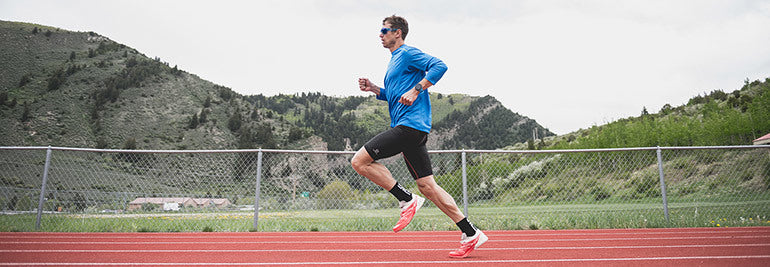
Intro to distance running technique
Stride rate
Despite the running speed, stride rate should stay within a narrow range. At race pace, cadence should be at or above 180 steps per minute, or 90 revolutions per minute (counting one leg). Suunto uses revolutions per minute, so a good goal at race pace is 90-92 revolutions per minute. During training, endurance pace for example is considerably slower, however cadence should still be close to that 90 rpm mark. I shoot for 86-90 rpms no matter how slow I am running. This means a shorter, quicker stride for endurance and recovery paces.
Foot strike
As your foot swings through and the leg extends out in front, most people set the foot down too early, creating a breaking force, heel strike, and high impact. Instead, paw back and contact the ground under your center of gravity with a softer landing propelling you in the direction of travel.
Vertical oscillation
A long, loping stride has a larger vertical component, which results in more distance traveled up and down. Think of your legs as wheels rather than pogo sticks. One way to see this is to have someone video you running along a fence and see the vertical displacement.
Running tall
This is a good mantra for any runner to keep in mind. This means maintaining a strong core, posture, and head position. Look forward towards the horizon. Imagine you are a marionette doll with a string holding you up from the top/back of your head. Uphill, think about staying vertical. For gradual downhills, lean forward so you are perpendicular to the slope.
Slight forward lean
Running tall, but with a slight forward lean. Running is a series of falls, so you want a slight forward lean which is more pronounced at fast running speeds. Do not achieve this from bending forward at the waist. You should have a straight line from your ground contact point, up through the top of your head. One drill I like is a sprinting drill called “falling starts.” Start by standing tall and then fall forward with the fulcrum point at the balls of your feet, staying long with no breaking at the waist. You will want to step forward to catch yourself, but instead of a step, immediately break out into a fast run.
Arm carriage
Your arms are your counter weights so movement is good, but it should happen naturally and without expending extra energy. Straight on, hands can swing towards the center line, but should not cross. Elbow should be bent with a slightly acute angle, less than 90 degrees to keep the lever arm short. Be careful not to carry your arms too high or elbows to wide, which results in excess strain on your shoulders, upper traps, and neck. Keep hands relaxes as if you are carrying a fragile egg in each hand.
Josiah Middaugh is the reigning XTERRA Pan America Champion and 2015 XTERRA World Champion. He has a master’s degree in kinesiology and has been a certified personal trainer for 15 years (NSCA-CSCS).
Images by Matt Trappe
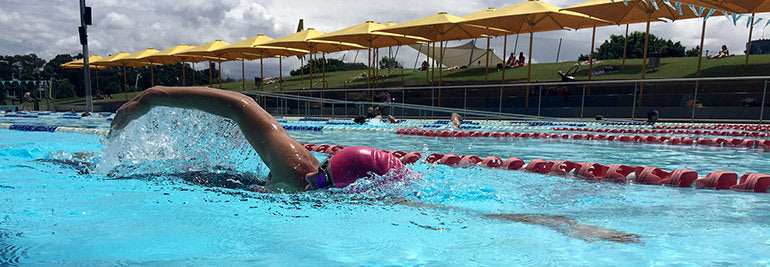
Iron Century: A world record broken down under!
Debi Hazelden has broken the record of most half-ironmans in a row.
Debi’s on top of her game
With 40 runs, bikes and swims under her belt, Debi is going strong – and going quick, averaging just under 5.5 hours. While according to the daily update blog, she’s feeling the physical drain, she’s also full of energy and raring to go. And the pictures? Debi looks as fresh as a high-school track star pacing the 10-minute-per-mile group at the local Turkey Trot. Of course, Debi’s been sneaking a carrot cake every now and then – she deserves it!
…but it hasn’t been easy.
The biggest challenges up to this point? “Illnesses – Our 7 month old son goes to daycare and has had his first couple of viruses which have been passed onto me! I had Hand Foot and Mouth in the first week and in the 4th week I’ve had a cold.
Bad news for John
Unfortunately for John, an injury had him sidelined on the advice of a doctor. Says John: "As most of you know, I have encountered a glitch on route to my immediate goal. I have an inflamed VMO muscle for which I am currently receiving treatment. The injury has prevented me from running.” It was the first the right one, then the left one – John’s done some physio and is back to logging KMs, but at well below intended volume, and he’s too far behind to catch up. What can he still do? Help Debi – which he’s doing plenty of, whether it’s beside her on the bike, in the pool, or on the track.
The weather’s been all over the place
From a high of 43-degrees celsius to wild thunderstorms with 70kmh winds, and one day with nearly ten centimeters of rain, the weather has been a challenge – especially when there’s no putting off your bike or run till the next day. Hey, at least in the pool you’re already wet.
She’s had plenty of help
A challenge like this is impossible without support – in addition to her core team, local members of the run/bike/swim community have been coming out to keep her company. If you’re in the area, head on down to Centennial Park and look for the white RV!
The swim is easy
"It’s definitely a surprise we look forward to the swim each day,” says Debi. “It’s not usually our favourite discipline. it’s like a recovery session for the body with no effort.”
Ryder – and several others – joined Debi for the record-breaking day.
Don’t worry, Ryder has baby sitters – and a stroller
One of the most remarkable things? John and Debi are doing this less than a year after having their first baby. Ryder is logging plenty of distance on his personal Suunto as he gets pushed around on his stroller during the ‘run’ portion of the race.
Only 60 more to go
With the world record already in the bag, some of the pressure is off – but the work’s not done yet. The goal is 100, and Debi’s less than half-way done. There’s sure to be more drama – follow along on their Facebook page and stay tuned here for more in-depth updates!

Coast to Coast: an iconic adventure race
Speight’s Coast to Coast is an iconic multisport race across New Zealand's South Island. Every year, more than 800 competitors line up to run, cycle and paddle the 243km width of the island. No one knows more about the event than 5-time winner and current race director, Richard Ussher. He explains its enduring appeal.
Why is the race so iconic?What really sets it apart is the concept of crossing a country in a day (or two). New Zealand’s South Island is the perfect distance – long enough to be a real challenge, yet short enough to be achievable by more than just the truly insane.
Is it more adventure-race or triathlon?I’d say it falls between the two. Top competitors certainly treat it more like a triathlon, where further down the field you probably get more into the adventure-racing realm.
Richard also created a Suunto Movie of the Coast to Coast Mountain Run course with his Suunto Ambit3, which you can see here.
Post by Richard Ussher.
Which discipline decides who wins?You really have to be an all-rounder to win. The two sections that tend to decide the race are the Mountain Run and the Kayak. But then there’s still 70km of cycling to finish it off – normally into a stiff headwind.
Did you record the Running Stage time yourself?Yes. It’s probably close to what the bulk of the better two-day runners will set. The top one-day and team competitors are closer to the 3-hour mark though. Last year’s winner Braden Currie clocked 2:49 for the run.
How did you become race director?The event was sold to a company called Trojan Holdings in 2013. They contacted many former participants and asked them where they thought the race needed to go. I was a little vocal in my opinions, and after talking with them, ended up in the role. It certainly wasn’t something I thought about before, but it’s a great opportunity.
So you’re retired?No, I’m not retired. I had a very tough 2014 because of injury, but I can finally see light at the end of that tunnel. My focus is obviously on the management side of Coast to Coast now, but I still love getting out and competing. Nowadays, I’m more focused on competing in races that I’ve always wanted to do.
How do you like the Suunto Movie Tell us about Suunto Movie on the Ambit?I really like this feature, especially where you get to see the whole course in the revolving view. I can see it being really useful for multisport athletes, as it gives you an idea of what the course might be like, and to a certain degree helps create a picture of the gradients involved.
Have you used Suunto products before?Yes, I’ve been using Suunto products from early on in my adventure-racing career – starting with the Suunto Advizor, which I still have. I also use the global compass range and orienteering compasses as well as Suunto’s Ambit and Core watches. Suunto products have always been fantastic.
Follow the race here: www.coasttocoast.co.nz
All pics ©sportzhub.com
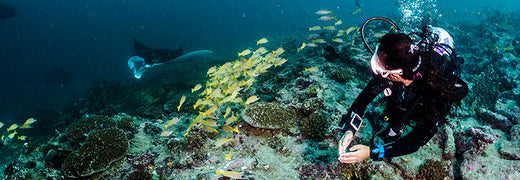
What you absolutely, positively, must bring and do on your first dive holiday
Packing for vacation should be easy – a couple swimsuits, a pair of flip-flops, some sunscreen, and you’re good to go – right? Not if you’re going diving. To say it’s an equipment-intensive sport is putting it lightly. Good news: you can get your tanks at almost any dive location – so at least you won’t have to put down for overweight baggage fees. But there are a few key items you’re probably going to want. Suunto’s Alec Jones has spent the good part of a decade at the dive paradise of Sharm-El-Sheik as a dive instructor – so he’s a qualified expert.
First off, do a holiday
A dive holiday may sound extravagant, or expensive – but it’s one of the best ways to expand your horizons. “You’ll encounter different conditions, visibility, wildlife – you name it. Diving is about exploration!” says Alec.
Your own fins, mask and snorkel
Fins and masks are pressure points – you get the wrong fit, and you’re going to be uncomfortable all day, and that makes diving less than fun. At that point you might as well chuck in a snorkel. “Rental kit often isn’t so nice,” says Alec. “Even if you’re just getting into it, I really recommend getting a decent, properly fitting mask, and some decent fins.” And if you’re someone who would call themselves a germaphobe, you might, uh, want your own wetsuit, too.
Dry Bags, sunscreen and hydration
You’re probably going to be spending a lot – a lot – of time on a boat in the sun. Sunscreen you know about – but what you might not realize is how much you’ll get dehydrated. Add in that a lot of other counties purify their water – you won’t be getting minerals you’re used to – and it’s a recipe for dehydration. “A lot of people would come to dive in Egypt, get sick, and blame something in the water – but it’s actually dehydration!” says Jones.
Another great thing to bring along? Small or medium-sized dry bags to drag out on the boat – useful for electronics or just keeping a dry t-shirt nearby.
Gaffer tape and zip ties
Why? You don’t know yet. Just bring ‘em.
A dive computer you know
Your dive computer is an essential piece of kit – and since it’s a little complicated, it’s great to go with something you know. The new Suunto EON Core is an easy-to-use, Bluetooth®-equipped dive computer that will log every meter of every dive. With your own kit, you can pre-load it with your own dive plan – a nice bonus. Another hot tip? A portable power bank to keep your dive computer charged.
Keep going further
Water covers over 70% of our planet – there are lots of places to go. “For Europeans, the Red Sea is really close,” Jones says. “But why stop there? There’s Indonesia, the Philippines, Malaysia, the Cenotes in Mexico, the Florida Keys, Costa Rica, the Galapagos – the list is really endless!”
Do everything right, and you’ll have the experience of a lifetime – and you might even make some new friends. “I’ve seen a lot of solo divers come down and make friends that they’ll keep for life,” says Alec. “Now they come back year after year to dive together.”
READ ALSO
A pro diver’s essential tips for newbie divers
10 tips to take amazing underwater photos
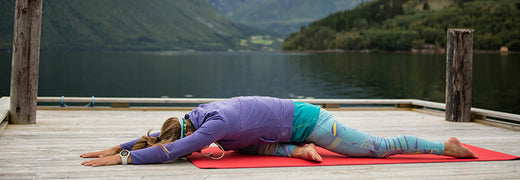
Emelie Forsberg's top 7 yoga poses for runners
There is no better way to start the day than by doing yoga. For champion mountain runner Emelie Forsberg, a regular morning yoga practice keeps her life in a balance.
A lot of people have the impression yoga takes an hour or 90 minutes. Not so – Emelie says a regular yoga practice can be short and sweet. A daily practice of 10 to 15 minutes is better than a once-in-a-while 90-minute class. Regular practice brings the results, she says.
Here are her 7 favorite poses. These can be done in a sequence in less than 20 minutes.
Easy seated: One to three minutes
"It’s nice to sit for a few moments before beginning moving just to feel the breath and the body. Simply cross your legs in front of you, and tune into your belly moving in and out with the breath."
Downward Dog: Five to 20 breaths
"I often come into this position even if I don´t do the sun salutations because it’s great for the hamstrings, calf muscles, and the upper back. It also works as a stretch for tight underarms."
"It’s like creating the shape of the letter “A” with the body. Spread the fingers wide, actively push into the hands, breath in and lift your butt up high. Try to distribute weight down evenly through the arms and legs."
Warrior 2: Five to 10 breaths each side
"This pose is great for developing strength in the legs and finding stability by keeping the hips in a balanced position. Align your feet so the front foot’s heel is in line with the arch of the back foot. Keeps the arms out at shoulder height and gaze out over the front fingers. For a more demanding session I hold it for 10 breaths on each side. Keep the front knee above the ankle, the back leg straight and the torso upright."
Click here to read how yoga helps Emily’s life stay in balance
Triangle pose: Five to 10 breaths each side
"Nice stretch for the hamstrings and side body, and also works on balance."
Tree pose: Five breaths each side
"Here we test our balance, using the small muscles in the ankle and foot. Try also to keep a stable and long upper body, as well as ensuring relaxed shoulder blades while holding your arms above your head."
Boat pose: Five to 10 breaths
"Great for working on core strength. Sit on your butt, with the soles of your feet on the mat and your knees up. Sit upright, keeping your spine long. Then lift your feet off the mat, bringing them to knee height, while pointing the toes. Now, lean back carefully, keeping the spine long, and bring your arms forward so the hands are by the knees."
Pigeon pose: Three to 10 breaths
"Great for the glutes! If you’re feeling tired in the IT band, then this pose can really help. Stay here as long as comfortable and work with the breath to slowly (and carefully!) come lower down for deeper work. Be aware of any uncomfortable or painful compression sensations. It’s better to back off and approach this posture gradually over time."
All images by Matti Bernitz / Suunto
More related stories:
How yoga can make you a better mountain runner
How to bring mindfulness to the trail
Five yoga moves for runners

7 great things about winter for runners
Winter wonderland
Whether running on a hard frost, snow or just against a sun that’s low on the horizon, wintertime provides some magical landscapes that are a joy to run through. And it usually means fewer people around to spoil the view, so get out there and enjoy.
Kilian Jornet enjoys training in a winter landscape. © zooom.at/bergermarkus.com
Running at night
Running at night brings its own rewards. Arm yourself with a decent headtorch, hit your favorite trails and you’ll be amazed by how different the experience seems. Discover your noctural inner self and enjoy the new view it gives. Running at night is also good for your running. Less reliant on vision for foot placement, it forces you to tune into your other senses.
Eating cake
When you exercise in the cold you burn more calories. Consider it a free ticket to eat more cake – and other calorific goodies. Stuck for inspiration. Check out Emelie Forsberg’s homemade recipes for buns, pancakes and cookies. “The classic saffron bun for Christmas or Lucia is my favorite. I can eat so many of them,” she says. Get the recipe here.
© zooom.at/bergermarkus.com
Getting hot and steamy
Never has the sauna or steam room felt so good as after a winter run. With Suunto’s global HQ situated in Finland – the cultural capital of saunas – we are naturally huge fans of them. Deep sweating has numerous health benefits, from recovery to flushing toxins from your system. And after you just jumped in an ice bath or dived in some snow, you’ll appreciate them as hot as possible.
Focus on strength training
In summer there’s really no excuse for getting outside, which is why winter is such a good opportunity to focus on body conditioning and strength training. Get yourself down to the gym and sign up to some circuit training, pilates or weights – and you’ll feel the benefits in time for spring. Good things to work on for runners include pelvic stability, core strength and stretching.
© zooom.at/bergermarkus.com
Rest
Yes, sometimes the only way to get stronger is to rest. Like really rest and recover from that recurring injury. It’s something Suunto ambassador Ryan Sandes knows about. He’s currently taking some time off training to get back to full strength. “It’s a common worry that if you can't train you will lose your fitness and not be ready for an upcoming race, but I believe often the body knows best, and the time off from training helps it to fully recover and get strong,” he told us recently. Read the full article here.
Focus on technique
Winter is not a time to focus on personal bests, not when the ground’s muddy or there’s snow underfoot. So don’t fight it – embrace it and use the slower pace to focus on your running technique. If you have a good and balanced form you should be able to run on ice, over wet slippery wooden bridges or through mud and broken ground without problem. Try to imagine a straight line between where your foot lands, your hip and shoulder. More important than whether you heel strike or forefoot strike is where the foot lands in relation to the rest of your body. For more technique tips from Carmichael Training Systems, follow this link.
Main image: © zooom.at/bergermarkus.com
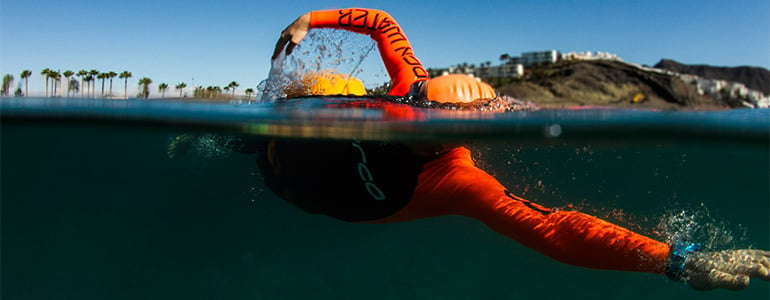
8 tips for open water swimming
Swedish triathlete Åsa Lundström learned to swim later in life, but thanks to good training she improved rapidly and became a champion. Below she shares eight tips for becoming a better swimmer in open water races.
Medical student Åsa Lundström is a two time Ironman winner and Swedish long distance champion. © Petri Kovalainen
Open water swimming is a lot more challenging than swimming in a pool. Wind, waves, currents, navigation, others swimmers splashing around you make having a strong technique and mindset essential.
1. Mind power
Open water swimming races can be mentally challenging. You can swallow water, have trouble navigating, get water in your goggles and knocked around by other swimmers. It’s important to stay focused and not get lost in negative thoughts. Try to develop tools to keep a positive mindset. For example, repeating your own positive mantra can be helpful.
2. Practice swim starts
If you lose your focus at the start of a race because someone is hitting you every second or two it can affect you for the whole race. But if you're familiar with it, then it won't affect you as much. To work on this, practice swim starts in a pool with a group of training friends.
3. Balance is key
Strong swimmers are much more stable in rough water. That's why weaker swimmers should work on their balance and stability by doing pool drills. Side kicking and polo swimming drills are good to start with. Core strength training exercises are also good.
Click here to find out how Åsa went from non-swimmer to champion triathlete
Doing drills with buddies helps to simulate race conditions. Petri Kovalainen
4. Follow the feet
During a swimming race, having someone immediately behind you can destroy your rhythm. It’s good to simulate this experience in a pool so you get used to it. A good drill for this is swimming in a row with three training friends, each on the feet of the other. Try being in each position – front, middle, back.
5. Know the conditions
You don’t want any surprises on race day. Make sure you know you can handle the conditions. If the race is in cold water, then you should practice in cold water. If the race is in open water, you should train in open water.
6. High frequency
To help maintain your technique in challenging conditions, try to have a high frequency arm turnover, higher than you normally would have in a pool. It makes you stronger, less impacted by people hitting you and helps you to slice through waves.
Learning to breath on both sides is important. © Petri Kovalainen
7. Find a landmark
When you swim in open water, it’s a good idea to navigate for a landmark, not something in the water. I try to find a landmark above the buoy so I don’t have to lift my head as much. The higher the landmark, the easier it is to navigate and not miss your target.
8. Breath on both sides
It’s a good idea to practice breathing on both sides. If you’re in a race and you have someone close to your right side, it might be better to breathe on your left side. Being able to breath on either side is also useful if waves are coming from one direction, or if you are trying to navigate towards something.
Lead image: © Orca/Gines Diaz

7 tips to accelerating your uphill speed
We touched base with Carmichael Training System’s endurance coach Nick White and got 7 gems of wisdom that will turn you into a vertical speed machine.
Emelie Forsberg pushing hard in the Andorra vertical skimo race. © ISMF Press Office
Consistency and volume
Having a solid aerobic fitness base is an important prerequisite to becoming faster on vertical ascents, so consistency and volume should remain central to any training programme. This base makes focused work on your lactate threshold and V02 max possible.
Improve your V02
The goal here is to maximize how much oxygen your body can process and deliver to your working muscles. Doing short, high intensity interval workouts, some of them ascents, are the way we achieve this. Match each interval with an equal recovery time. Here are some ‘go-to’ workouts that should be done two to three times a week with a rest day between each session:
9x 2min at maximum effort/2min easy recovery 6x 3min at maximum effort/3min easy recovery 5x 4min at maximum effort/4min easy recover Easier option: 5x 30s at maximum effort/30s easy recovery
Few athletes have a V02 max as high as Suunto ambassador Kilian Jornet. © ISMF Press Office
Focusing on lactate threshold
If it’s a trail race or a mountain run with big vertical ascents that you’re training for, then it’s also critical to focus on your lactate threshold. Do this through longer duration interval workouts done at a slightly lower intensity than the V02 training outlined above. The goal is to work consistently until you can't work at that intensity anymore. After rest and recovery, your body will become stronger. Intervals should be between 10 to 30 minutes in length, with half the recovery time, and a total training time of around 45 to 60 minutes. For example: 4-5x 12min intervals, with 6min rest between 3-4x 15min intervals, with 8min rest between 2-3x 20min intervals, with 10min rest between Both of the above interval types, V02 and lactate threshold, are necessary, whether you’re doing a vertical kilometer race or a longer mountain run. Each one is specific to a different aspect of vertical speed.
Ryan Sandes training in his local hills in Cape Town. © Craig Kolesky/Red Bull Content Pool
Match your gradient
While it's a good general rule to match the gradients in your training to that of your event, it’s also important to mix it up so you're not hitting the same hill over and over again.
Don’t overdo the hills!
Not all of your interval workouts should be done on hills. Do them once or twice a week on hills and the other days train on rolling or flatter terrain.
© ISMF Press Office
Keep it specific
At least some of your training should be on terrain that’s similar to what your race will be on. If at least some of your training is done on similar trails or hills, then you can be sure you’re developing the necessary muscular strength and technical skills as well.
Watch your weight
Body weight is obviously an important factor in the vertical ascent equation. A heavier runner will require a lot more energy and force to climb a hill at the same speed as a lighter runner. It really is a power-to-weight ratio issue at its core. You go uphill faster either by gaining more power, or becoming lighter, or both. So go easy on the cake!
MAIN IMAGE: © ISMF Press Office
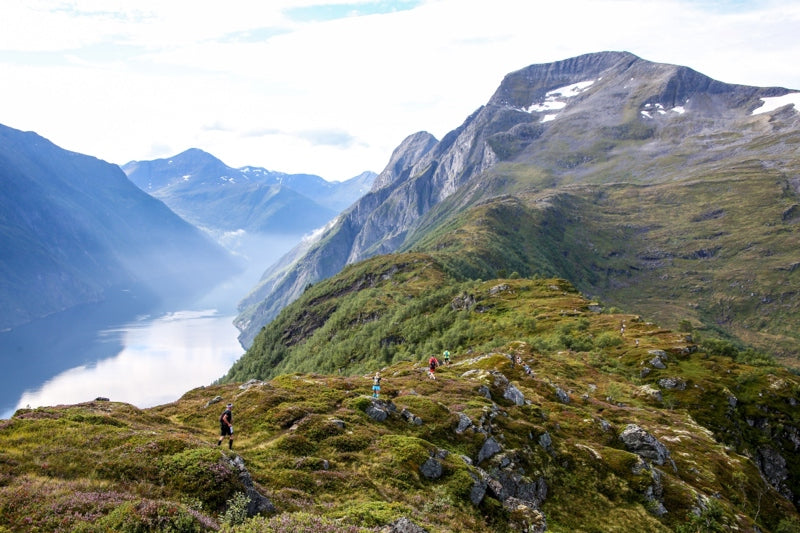
Suunto joins the Golden Trail World Series
👉🏼 Follow Sierre-Zinal, the fourth race of the GTWS 2022 season, on Saturday 13th of August from 08:30am CET here or at goldentrailseries.com/gttv/
👉🏼 Follow Stranda Fjord Trail Race, the third race of the GTWS 2022 season, on Saturday 6th of August from 11:00am CET here or at goldentrailseries.com/gttv/
👉🏼 Follow Marathon du Mont Blanc, the second race of the GTWS 2022 season, on Sunday 26th of June from 7:00am CET here or at goldentrailseries.com/gttv/
👉🏼 Follow Zegama, the first race of the GTWS 2022 season, on Sunday 29th of May from 8:30am CET here or at goldentrailseries.com/gttv/
Suunto is proud to be an official partner of the Golden World Trail Series 2022 that’s kicking off on May 29 with the legendary Zegama-Aizkorri trail marathon in Spain, and is followed by five more high profile races around Europe and the US that culminate in a grand finale on the island of Madeira.
“We are thrilled to partner with the Golden Trail World Series and be part of the most exciting trail races of the summer,” says Antti Laiho, Suunto global brand marketing manager. “With the new SuuntoPlus Race guides we can also support the competitors in a new, helpful way.”
What makes it special
These iconic races are the ones every runner wants to experience. This, and a clear and simple format where each runner’s best three results from the six races count, make the series easier for the public to follow and get behind. Each year the Golden Trail World Series will choose a very special race for the Grand Final In 2022, the top 30 men and women from the overall ranking after the sixth race will be invited to the Madeira Ocean Trails stage race grand final. This guarantees epic action until the very last finish line.
Supported by Salomon, the series is special in many other ways. “In trail running nowadays there are many series, world championships, the European championship and so on so nobody really knows what is going on,” says Philipp Reiter, the Global Community Manager Salomon - Trailrunning.
“The Golden Trail World Series is different because it has the best athlete field in the world and supports athletes regardless of brand sponsor to join the competition, it pays travel expenses to get them to the races and there is equality between men and women in terms of prize money, visibility, media coverage, which is pretty unique. And the prize money is really high. The goal of the series is to bring trail running to a larger audience and to grow the sport, not just promoting it to the core community as is the case so often.”
The seven races
Tune in or sign up for the world’s biggest trail running show!
29th May: Zegama-Aizkorri, Spain
26th June: Marathon du Mont-Blanc, France
6th August: Stranda Fjord Trail Race, Norway
13th August: Sierre-Zinal, Switzerland
17th September: Pikes Peak Ascent, USA
25th September: Flagstaff Sky Peaks, USA
26th to 30 October: Grand Final, Madeira Ocean Trails®, Madeira.
Sign up and follow real-time race guidance during the GTWS races!
With the help of SuuntoPlus Guides, we will guide you through your Golden Trail World Series race. Before starting a trail running sport mode on the start line of the race, go down to exercise options and select the correct Race Guide in the SuuntoPlus Guides menu. Start the workout and you will see race course information like climbs, feed zones, control points and more in real-time during the race. Swipe left to see the guidance screen.
Learn more about SuuntoPlus Guides here.
All images: © Jordi Saragossa

7 tips for road runners moving to trail
Jonathan Wyatt needs no introduction in mountain running circles. He's the eight time winner of the world mountain running grand prix series. Below, he offers seven tips to help road runners transition to trail.
Running on changing, uneven terrain develops muscles that road running doesn’t really reach. The body responds to the terrain by using stabilizing muscles, balance and core. But transitioning from road to trail requires care. These seven tips will help you make the change.
1. Start progressively
Following Killian Jornet up the Matterhorn might look like fun, but you’ll enjoy it more when you move up the technical scale over time, adding more technical and longer runs as your confidence and trail fitness increase. If a normal run for you is one hour on city streets then start by running 30 minutes road and 30 minutes trail to make a gradual transition.
Start on easier trails before hitting the mountains, Wyatt says. ©Jonathan Wyatt
2. Shorter stride
A soft and slippery trail will give a greater workout sometimes resulting in fatigue or strain in the hamstring area. Don’t fight against a slippery uphill or downhill, instead reduce your stride length and increase your leg speed (turnover) so you’re putting less power down through your feet on each step. This reduces slipping. Running on sand is a good way to train this.
3. Scan ahead
Read the trail ahead and don’t just react to what’s immediately below you. With road running you can look at your feet, but not so out on the trails. You want to scan ahead rather than looking down at where your feet are going to land. By instead reading the terrain ahead, your feet will follow where your eyes are leading.
4. Learn to play the trail
Look for good lines to find the most efficient part of the trail and use banking on corners for smooth, fast entry and exit speeds – especially downhill. Learn to play on the trail where you can use terrain features to slingshot out of corners, accelerate from downhill into ascents and, most importantly, to have fun!
Trail running reduces overuse injuries common with roadrunners. ©Droz Photo
5. Care for your ankles
Roadrunners often twist an ankle when they take on more technical running terrain. To improve ankle proprioception – eye-foot coordination – trying using a wobble board or practice standing on one foot, making sure the knee is centered over your second toe as you look down. Tendons and foot muscles can take a pounding if you’re not used to uneven terrain and these exercises strengthen them. Close your eyes and do slow knee bends to spice it up too.
6. Find local trails for your level
Finding the best trails is not always easy so if you’re new to off-road running, talk to trail runners, go online or find popular routes in your area on Suunto App's heat maps to find suitable running trails. Remember safety is first, so you’ll need more equipment, preparation and common sense when running in the great outdoors.
Jono Wyatt is an eight time winner of the world mountain running grand prix series. ©zooom.at/Markus Berger
7. Remember, hills are your friends
The changing terrain will help you avoid overuse injuries that can occur when running on repetitive flat surfaces. Add more hills as you grow stronger off road. Remember too, the softer ground and grass on many trails also help to reduce the impact of downhill running on joints and muscles.
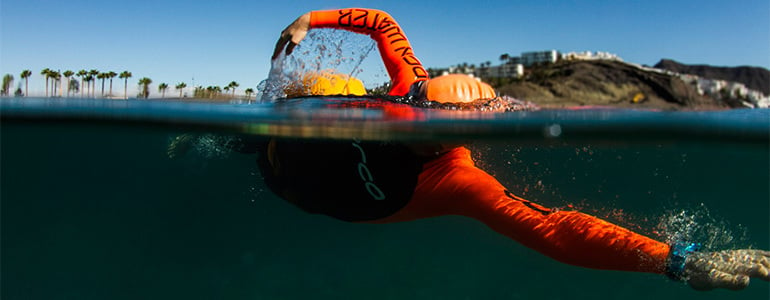
The road to Kona Ironman, Step One: Planning for Success
What does it take to train for the Ironman World Championship in Kona, Hawaii? Follow our four-part series about Suunto athlete Åsa Lundström as she prepares and find out!
For Swedish triathlete Åsa Lundström the next few weeks are everything.
Over the last month, the 30-year-old medical student and professional athlete has been preparing for the approaching Ironman World Championship in Kona, Hawaii on October 10th, 2015.
It’s the legendary Ironman that every triathlete dreams of competing in. That dream is about to become a reality for Åsa.
“Every sport has tales to tell of battles on the race course,” she says. “And with Ironman, we all hear stories of the legendary clashes of the triathlon titans at Kona.
“The best part is that we now have the opportunity to become one of those stories.”
Click here to read more about Åsa, the unlikely Swedish triathlete
Like all big projects, Åsa's road to Kona begins with the most important step: careful planning. She works closely with her professional triathlete coach, Cliff English, for this. When to intensify, where to train and when to go to Hawaii have all been planned well in advance.
Cliff updates Åsa’s training schedule week-by-week, always trying to find the right balance between the intensity and volume of her training and ensuring she gets enough recovery time.
“I’m constantly monitoring her sessions, looking at objective measurements, such as pace and power, as well as her subjective feedback on each session and on other factors including sleep quality, muscle soreness and freshness,” Cliff says.
During a normal training week, Åsa puts in between 20 and 25 hours. For Kona, that jumps to 35 hours every week. Her life becomes structured around training. In one week, she swims five or six times, cycles four or five times, runs five to six times and does strength and core training three times.
“Åsa typically trains two to three times per day,” Cliff says. “Some of the sessions are separate with a morning session then a midday session and typically a lighter active recovery session later in the day.
“I tend to prescribe one key session per day, however I also include combo sessions that include bike and run that are typically executed at race efforts.”
All this training might sound austere, like Åsa has no life, but she enjoys the process.
“When I have a big goal to work towards, it feels natural to focus on that, and to make choices adjusted to it,” Åsa says. “I don’t believe being disciplined means life cannot be fun at the same time.”
To keep things fun and to plan in a short term training goal, Åsa recently competed in the Tjörn Triathlon in Sweden and won the women’s division.
“It was a great boost,” she says, “and gave me proof that my training is going in the right direction.”
That’s important because she says it’s not always easy to tell if her build up is going well.
“When you are in a big training period, you feel tired and worn, and it’s hard to tell sometimes,” she explains. “However, when you feel tired, and you somehow manage to make the body do what you ask, then this is a good sign, especially if you were able to push yourself to a required pace or effort you didn’t think you could do.”
Åsa recently travelled to Fuerteventura in the Canary Islands to begin her final preparations. The warmer conditions are more similar to Hawaii than in Sweden, making it a good training ground.
Check out the second step, progress, of our four part series about Åsa as she continues on the road to the Ironman World Championship in Kona.
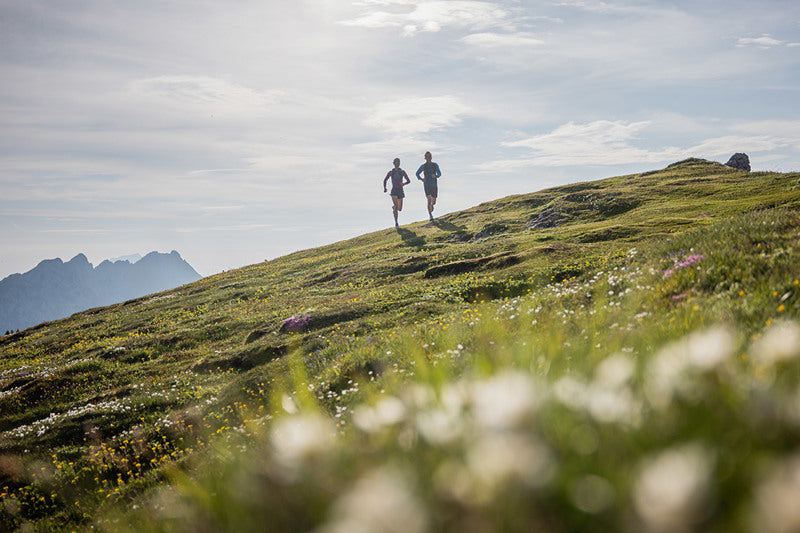
Discover dozens of SuuntoPlus sport apps for your Suunto
Automatic sprints, race nutrition, loop counters, marathon estimator and more! SuuntoPlus sport apps are easy to use watch functionalities that enhance your experience with your Suunto watch with use case specific benefits.
To get started, browse the selection below and in Suunto app’s SuuntoPlus Store, select which ones you want to use on your watch and activate them before starting an exercise.
You can use all SuuntoPlus sport apps with Suunto Vertical, Suunto Race and Suunto 9 Peak Pro watches. Most of the SuuntoPlus sport apps are also compatible with Suunto 9 Peak, Suunto 9 Baro, Suunto 9, Suunto 5 Peak and Suunto 3 watches.
Read on and find your new favorite sport app!
Learn how to get started with SuuntoPlus sport apps
Training & Physiology
HR zones
This sport app shows you the cumulative time on each zone during the workout.
Fused zones
Fused Zones shows which intensity zone you are currently in, looking at different intensity metrics and based on that evaluating the best matching as a result.
Peak Pace
Peak pace gives you real time statistics of your peak efforts on your run.
Peak Power
Peak power gives you real time statistics of your peak efforts.
Movement
This sport app measures your movement with wrist acceleration. This gives new type of insights in sports which involve rapid movements.
Trainingpeaks (HR)
Helps to understand the workout effort and training stress in real time with Heartrate Training Stress Score (TSS(HR))
Trainingpeaks (cycling power)
Helps to understand your riding effort in real time with Normalized Power (NP), Training Stress Score(TSS) and Intensity Factor (IF).
Trainingpeaks (running pace)
Helps to understand your pacing in real time with Intensity Factor (IF),Running Training Stress Score(TSS(r) ) and Normalized Graded Pace (NGP).
Strava
Get specific about how much work goes into your activities with real-time Relative Effort
Burner
The relation between fat and carbs burned by exercising depends on your intensity.
Training Tools
Manual interval (pace)
The manual interval sport app gives you a simple tool to follow your interval session on the fly.
Manual interval (power)
The manual interval sport app gives you a simple tool to follow your interval session on the fly.
Manual interval (hills)
The manual interval sport app gives you a simple tool to follow your interval session on the fly.
Sprint (running pace)
Track sprints automatically while running or cycling to see the number, distance, and time of each interval during your training session
Sprint (cycling power)
Track sprints automatically while running or cycling to see the number, distance, and time of each interval during your training session.
Loop (speed)
Automatic location-based lap insights help you analyze the stats for each loop.
Loop (pace)
Automatic location-based lap insights help you analyze the stats for each loop.
Loop (power)
Automatic location-based lap insights help you analyze the stats for each loop.
Ghost Runner
Catch the virtual ghost runner to practice your pacing or just for fun.
Fitness Testing
FTP test
Functional Threshold Power (FTP) test is designed to give riders an understanding of the highest average power they can maintain for one hour.
Cooper test
The goal of the cooper test is to run as far as possible in 12 minutes to estimate your VO2Max value.
Anaerobic threshold
The test will approximate the anaerobic threshold for running and estimate the anaerobic threshold pace and heart rate.
Aerobic decoupling
The aerobic decoupling will assess your aerobic fitness by evaluating the decoupling effect during longer workouts.
Bleep test
Bleep test – or Beep test – is the most common fitness test used in the world especially popular in team sports to test your current fitness.
Racing
Race companion
Race companion gives athletes a simple tool to get key information with them to the race.
Race nutrition
With this sport app, athlete can setup the timing for each intake and then follow the plan while flying down the mountains.
UltraRace time
When preparing for a long ultra race, it is motivating to see how this pace equals to the potential race time.
Marathon estimator
Marathon estimator gives you an estimated finish time based on your current pace, duration done and remaining distance.
Half Marathon estimator
Half marathon estimator gives you an estimated finish time based on your current pace, duration done and remaining distance.
RaceTime
This sports app helps you to see how your current pace equals to the potential race time over different race distances.
Backyard ultra
The Backyard Ultra is a running event where runners will run 6.7km each hour. As long as they last.
Sport specific
Shoe tester
The shoe tester app is a protocol on how runners can test the impact of different running shoes with a dedicated testing protocol.
Cadence coach
The cadence coach will show you live cadence and stride length, helps you use the right running technique to avoid injuries.
Running Economy
Running economy is the assessment of a runner’s efficiency by analysing their input (heart rate) and output (running pace with NGP).
SwimRun
The swim run sport app gives you key stats for your swimrun race with automatic transitions from run to swim and back as many times as needed.
Duathlon
Duathlon sport app is designed to automatically switch between run and ride views in hectic race scenarios to give you the right data.
SwimTimer
Swim timer is designed to provide swimmers with a better understanding of their interval sessions showing interval counts, rest time etc.
Gym timer
The gym timer can be used to follow the rest times of a workout.
Tabata
Tabata protocol is used as a high intensity workout such as circuit training, consisting of 20 seconds of hard effort and 10 seconds of rest.
Surfer
This sport app gives you all the key stats for your surf session. How many waves did you surf, time surfed and paddle.
Golf score
Golf score sports app is a handy tool for keeping count of number of strikes during the golf.
Tennis score
Tennis score sports app is a handy tool for keeping the tennis score on your wrist while playing.
Badminton score
Badminton score sports app is a handy tool for keeping the badminton game score on your wrist while playing.
Soccer score
Soccer score sports app is a handy tool for keeping the match statistics on your wrist while playing.
Score counter
Score sports app is a handy tool for keeping the score count while playing games.
Disc golf
A handy tool for keeping score and measuring distances during your disc golf game.
Sail racer
Enables you to synchronize your start time to the official start time of the race to get a countdown on your watch.
Outdoor experience
Emergency Info (I.C.E.)
Store essential contact information, allergies, blood type and other medical details under the “ICE” as a sports app.
Safe
Quick access to your GPS coordinates and other key information of your current location as well as your starting point.
Climb
Keep track of your effort while hiking up a mountain, rock climbing, doing hill repeats in your backyard or running upstairs.
DirectPath
The DirectPath gives you an understanding of the direct path between two points you have just covered and the efficiency on how well you were able to follow this line.
Drink Alert
Use the Drink alert to remind you regularly to rehydrate based on the weather conditions.
LastKm/Last mile Pace
In trail running, the pace can change drastically between uphills and downhills in, the last KM/mile app give you the live rolling kilometer/mile pace to follow.
CO2e
CO2e sport app shows how much CO2 you have saved compared to if you would have driven a car.
Moon
The app provides you with information about the moon phases.
Sun
The app provides you with information about the sunrise, sunset as well as time for dusk and dawn.
Big numbers
Sport app that gives you the data in bigger letters to make it clearly visible.
Variometer
The Variometer SuuntoPlus™ feature is a handy tool to keep track of your vertical speed.
Weather
Keep alert with storm alarms, measure water temperature or notice if your hike is going past the sunset.
Weather forecast
The sports app gives you the forecasted weather you can rely on during your long rides and hikes.
Devices
CORE body temperature
With this sport app you can pair your Suunto with a CORE body temperature sensor - to train smarter & perform better.
ActiveLook
With this sport app you can connect your Suunto to ActiveLook Smart Glasses and see key excercise data right in your field of view.
TrainRed
When using this sport app your TrainRed muscle oxygen (SmO2%) sensor will provide real-time feedback on the oxygenation status of muscles, helping you optimize your training and performance.
Learn how to get started with SuuntoPlus sport apps
10 SuuntoPlus sport apps for runners
Lead image by The Adventure Bakery
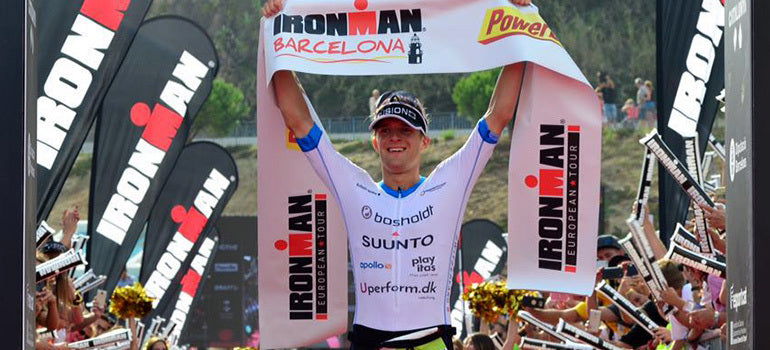
Talking training with sub-8h triathlete Patrik Nilsson
From how to balance his training load to his favourite post-workout meal, Swedish triathlete and Suunto athlete Patrik Nilsson shares his approach to training.
At this year’s KMD Copenhagen Ironman, winning 25-year-old professional triathlete Patrik Nilsson achieved the seventh fastest time in the history of Ironman: 07h49m18s. This smashed his best personal time by 20 minutes.
Last weekend Patrik was at it again and crossed the line in Ironman Barcelona in another amazing time of 07h55m28s. We caught up with Patrik just before Barcelona and quizzed him on his approach to training.
You must have felt amazing at the Copenhagen race?
When we reached the mid way point of the bike ride, I started to think about what time I could achieve. I thought for a moment I had been counting wrong or something. I realised if I kept up the pace I could go under eight hours. But then it was even faster! Under 7h50m is amazing. Way faster than I thought possible!
You’re working with a new coach, right?
Yes, and she’s also my girlfriend. Teresa noticed a lot of things in my training and in my mentality that wasn’t as it should be. To do well in races, you need to have fun. You need to really enjoy it, to say, “I really want to win this”, and that’s what I didn't have before.
Has your training changed?
I’ve been focusing more on long runs and long bike rides to develop endurance and to push my threshold higher. I’ve been trying to work on my fat percentage to get my weight down and at the same time keep my muscles strong. As I say, one of the biggest changes was around my attitude – to have fun and really enjoy it.
How much are you training?
I’m training a lot! On a hard training week, usually between 30 to 35 hours. At the moment I’m doing a lot of riding, around 15 to 20 hours a week, and about 100 km of running and the rest swimming and core work.
How do you manage your training load?
I have a close connection with my coach, which is easy when the coach is your girlfriend! It makes it really easy for her understand how I'm feeling. We use Training Peaks, which makes it easy to see how tired I am, the training stress load and how I’m developing over time.
How long do you usually taper for?
Tapering is usually for one or one and a half weeks. The day before a race, I do one and a half hours of training. Two days before is just an easy jog or a swim. Three or four days before I do a hard three-hour bike ride.
©KMD Ironman Copenhagen
Do you follow any particular nutrition plan?
I drink a lot of chocolate milk. Since I’m training a lot, I need the carbohydrates. Chocolate milk makes it easy to get a little more energy. After a hard session I can drink between three to six litres of it. Apart from that, I try to eat healthy. I’m writing down everything I’m eating so I can see how much I’ve got through in a day.
What’s your usual recovery plan?
In the week following an Ironman I don’t do any running. I know that it’s easy for me to injure my calf if I do. During the week after the race I do an hour or two of easy riding or easy swimming each day. Then one week after the race, it’s back to serious training. I need that week off to recover mentally as well.
Images © Carles Iturbe
Read more
PATRIK NILSSON TRAINS FOR THE LOVE OF IT
page
- Suunto Core support
- Suunto Core USER GUIDE
- SUUNTO EON CORE FAQ
- Suunto EON Core support
- SUUNTO CORE FAQ
- SUUNTO EON CORE USER GUIDE
- Military Tests for Suunto Core Alpha
- Does Suunto EON Core have a boot available?
- What materials are used in the Suunto EON Core?
- What is the average battery life for Suunto Core?
- What kind of battery does Suunto EON Core have?
- When should I calibrate the compass of my Suunto Core?
- WHAT LANGUAGES DO SUUNTO EON CORE AND SUUNTO EON STEEL SUPPORT?
- How can I lock the buttons on the Suunto Core?
- WHAT IS THE AIRPLANE MODE IN SUUNTO EON CORE / SUUNTO EON STEEL?
- DO SUUNTO EON STEEL AND SUUNTO EON CORE HAVE THE SAME CABLE?
- WHAT DOES 'FLIP DISPLAY' MEAN IN SUUNTO EON CORE / SUUNTO EON STEEL?
- DO SUUNTO EON CORE AND SUUNTO EON STEEL HAVE A FREE DIVE MODE?
- DOES THE SUUNTO EON CORE / SUUNTO EON STEEL HAVE HEART RATE MEASUREMENT?
- WHAT IS THE DECOMPRESSION ALGORITHM SUUNTO EON CORE / SUUNTO EON STEEL USE?
- HOW DO I PAIR MY SUUNTO EON STEEL AND CORE WITH SUUNTO APP FOR IOS?
- How can I adjust the display contrast on my Suunto Core?
- HOW DOES THE SUUNTO TANK POD WORK WITH THE SUUNTO EON CORE / SUUNTO EON STEEL?
- HOW DO I PAIR MY SUUNTO EON STEEL AND CORE WITH SUUNTO APP FOR ANDROID?
product
Sold out
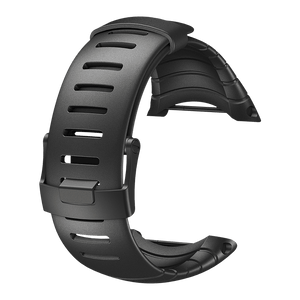
Suunto Core
All Black Standard Strap
This kit includes the strap and the pins and screws to attach the strap. The Core all black standard strap fits all Suunto Core models.
$89.99
Shop Now
Sold out
Sold out

Suunto Core Black Flat Silicone Strap
This kit includes the strap and pins, lugs and screws to attach the strap. The Suunto Core black ...
$69.56
Shop Now
Sold out
Sold out
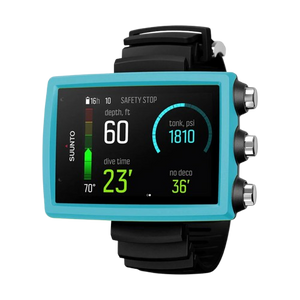
SUUNTO EON CORE AQUA BLUE
A compact dive computer with an easy to read color screen, rechargeable battery and wireless conn...
$1,173.90
Shop Now
Sold out

Suunto Magnetic USB Cable
Black
Use the USB cable to charge your Suunto device or to update the software. The USB cable is compat...
$65.21
Shop Now
Sold out

Suunto Tank POD
Wireless tank pressure transmitter for Suunto D5, Suunto EON Steel, EON Steel Black and EON Core.?
$565.21
Shop Now
Sold out
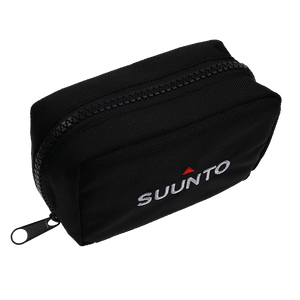
Suunto Soft Bag
Durable accessory pouch for watches and wrist-sized dive computers
Soft and compact canvas pouch with a solid zipper to store your Suunto watches, wrist-sized dive computers and accessories when you are not using them.
Dimensions: 5 x 3 x 2 inch
$39.99
Shop Now
Sold out
Sold out























































































